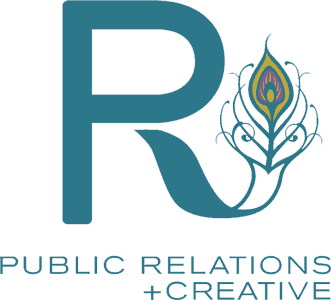The Public relations (PR) industry, like so many others, has evolved and changed dramatically since the dot-com boom. Today’s PR pros face challenges, including an ultra-fast news cycle, round-the-clock media coverage, and reputation threats in every corner of the internet. Read on for today’s top challenges of PR, as well as how your company can deal with them with the help of a well-equipped PR team.
1. The 24-Hour News Cycle

In the past, broadcast news ran for a handful of hours each day. Now, the news is on 24 hours a day, meaning there’s a constant flood of information entering households across the country. The news is on when you wake up with your baby at 5:00 a.m. and when you’re running at the gym at 8:00 p.m. This information overload can make it very difficult for your brand’s story to stand out from the crowd.
2. News Travels Fast…Very Fast
The virality of certain social media posts, videos, and images is great for global knowledge-sharing, but it is also one of the major challenges PR professionals face today. One negative review, which previously could have been dealt with one-on-one with the reviewer, now must be managed immediately or risk it going viral and causing irreparable damage to the company.
It goes without saying, then, that speed in PR is now of the utmost importance. Having a team of multiple individuals working on your company’s brand management at all times helps keep minor issues from spiraling out of control, especially on social media.
3. Crisis Management in the Age of Social Media
One of the major challenges of PR in the modern landscape is the need for real-time crisis monitoring. Disgruntled customers can reach you on your website, by telephone, by email, and across dozens of social media platforms. It takes more than a few hours a week to effectively complete social listening and ensure your customers are happy with the products and services you’re providing.
In the digital age, every brand must plan for the inevitable crisis to occur. Even if the issue is small-scale, a PR team can help you outline a crisis communications strategy and draft some boilerplate statements. You’ll also want to make sure your entire team knows who in the chain of command to escalate crises to when the time comes. Crisis communications used to be a problem for only the largest, most powerful companies, but due to the digital revolution, that is no longer the case.
4. Responsive Web Presence

Today, it’s the norm for people to get their news, check social media, connect with friends and family, and sometimes even work primarily from their phones. As such, it’s more important than ever for brands to have a responsive web presence.
A responsive webpage will automatically reformat itself to fit the size of any phone, tablet, or computer, meaning important information and photos won’t be cut off if the user isn’t viewing the site from a desktop. While it sounds simple, this requires some complex backend support and the keen eye of a PR professional to ensure your assets will look perfect on any type of screen.
5. Information Availability
Perhaps your company, when under the purview of a different management team, made some rash decisions. Or maybe a tweet went up a decade ago that was swiftly taken down due to its accidentally insensitive nature. It’s no longer simple to brush historical mistakes under the rug, as every brand has a digital footprint that can’t be erased. Information is readily available to everyone on the internet, and you simply can’t assume past mistakes will be allowed to lie dormant forever.
Undoubtedly, to tackle this challenge, PR teams can work with brands to hone a strategy rooted in honesty and authenticity. Brands must set aside pride and apologize for past mistakes or risk dealing with worse PR crises—and losing brand loyalists to competitors—down the line.
6. Clickability is Key

Whereas newspaper and magazine editors once made content decisions based on the information they felt their audiences most needed to know, now advertising dollars and click-through rates reign supreme. Clearly, PR pros must learn to position stories according to their “clickability.” Will the headline drive clicks? Is the subject line catchy? Is the topic highly relevant to the publication’s audience?
7. The Slow Decline of Print Journalism

PR teams have grappled with a decrease in actual print publications to pitch. Nevertheless, compressed demand for earned media in print publications and a dwindling number of reporters means competition is fierce in the current PR landscape. In order to face this challenge of PR head-on, PR teams must be highly adept at parsing out the most important and engaging stories for brands to highly-targeted outlets—a far cry from the wide-reaching PR strategies of the past.
All of these PR challenges are overwhelming for my small team. How should I decide which to prioritize?
We recommend developing a crisis strategy first. Look for helpful templates online, or engage a PR firm to help with the process—some even specialize in crisis management. From there, tackle PR challenges in the order in which they will have the most significant potential impact on your brand. For example, a responsive webpage can maximize sales, while a social listening strategy can improve customer relations. Thus, figure out your greatest business needs and go from there.
R PR Firm offers a wide range of services to help you face PR challenges head-on and thrive in their wake! From earned media pitching to comprehensive social media strategies, R is available to help your team tackle whatever comes your way. Contact us to schedule a call.
